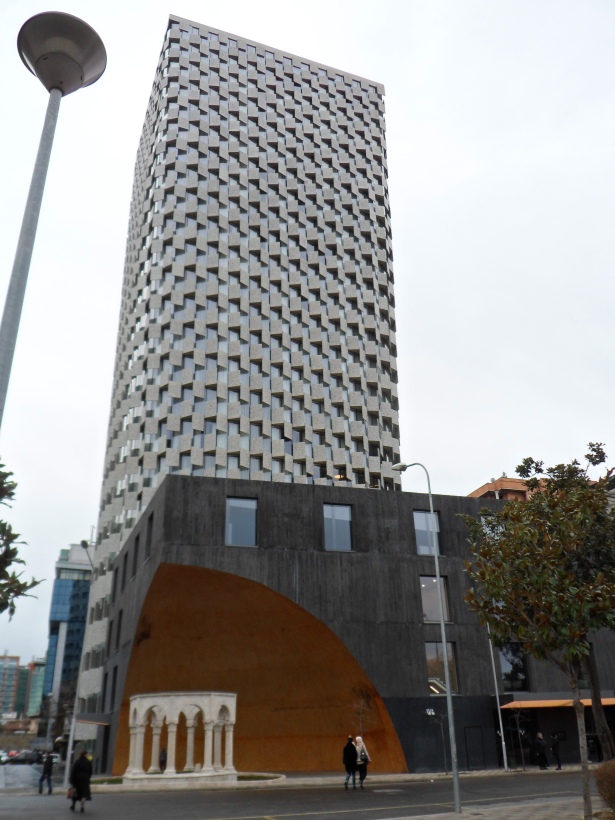
New Plaza Hotel building in central Tirana
Based on an informal, anecdotal survey of friends and family, Albania is not high on the bucket lists of the people in my (fairly extensive and eclectic) circle. On the other hand, for me, visiting Albania has been a long-held ambition, dating back about 30 years to my early university days when it was still a country closed to foreigners.
Enver Hoxha, leader of Albania from 1944 till his death in 1985, his residence in Blloku, and the monument built by his daughter to honour him after his death
With the death of the Communist dictator Enver Hoxha in 1985, and the collapse of communism in 1991, Albania opened up to the world and, in some ways, has been playing catch-up ever since.
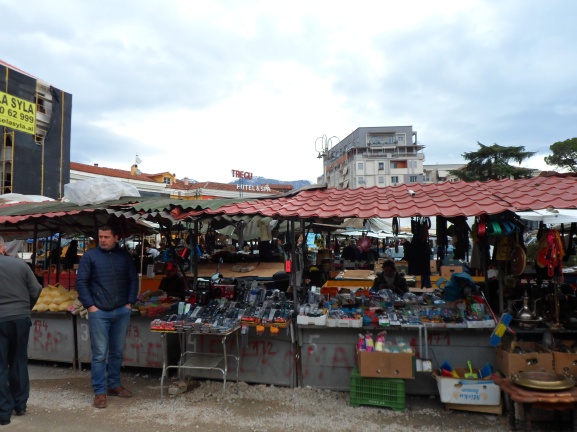
Markets in Tirana
Today, the country is recognised as a burgeoning new tourist destination, cheap for those with Western wages, and unspoilt, in some areas, by over-commercialisation. Indeed, this poorly managed economy is becoming increasingly reliant on the tourism industry to bolster GDP, and some 5 million tourists a year, mainly from the Balkans, Italy, Greece and ex-pat Albanians (almost another 5 million Albanians live outside Albania) visit this small nation with a declining population of only 2.9 million.
I am not a typical tourist! I travelled from an Australian summer into an Albanian winter and largely stayed away from the beaches of the Adriatic coast. I spent almost two weeks based in the Albanian capital Tirana, from where it was fairly easy to travel to numerous destinations around the country, although sometimes only by private car. The capital does not have a functioning train station and the buses are an adventure in themselves. But it is all good.
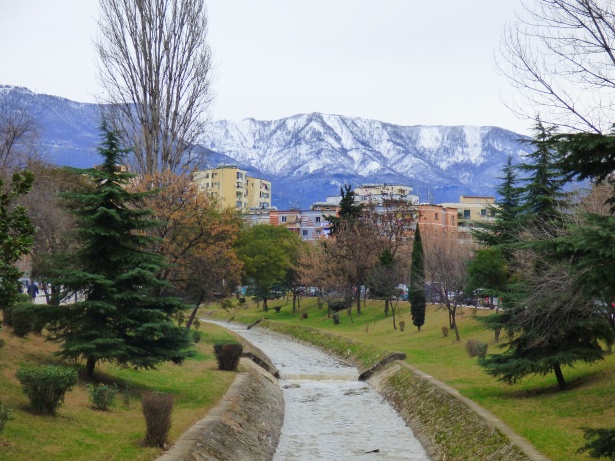
Tirana sits nestled beneath stunning Mount Dajt, a national park that can be viewed from the spectacular Dajti Express cable car, the longest cable car ride in the Balkans
I came here to experience, as best you can as an outsider who doesn’t speak the language, how Albanians live and to explore Albanian art and culture. I was also interested in the legacies of socialism and prolonged isolation from the rest of the world in a century during which the pace of change accelerated exponentially.
Although I am fortunate that Australian currency trades well against the lek and the prices of most things here seem comparatively cheap, I do not lack imagination and I think I have gained some understanding of how Albanian people live on a daily basis.
I shopped in the supermarkets, cooked in the kitchen, caught buses and furgons, ate burek from street stalls, and chatted extensively to people left idle by the lack of winter tourism. Albanians are a friendly lot, many of whom speak excellent English and are happy to chat to you about their country and their strong sense of Albanian identity.
Street art in Tirana
I was astounded by the richness of the Albanian cultural heritage, and equally so by the utter indifference of many people in this nation to its cultural treasures. Exceptions are notable, but feel that they are fighting an uphill battle.

St Christopher Cynocephalus (dog-faced), an unusual Orthodox rendition of St Christopher, found at the National Museum of Medieval Art in Korce
From an Australian perspective, I feel as if I have been travelling through an absurdist landscape in which everyone else around me seems perfectly at home.
Allow me to explain….
If I were to review my hotel on a site like tripadvisor, (and I don’t – usually) I’m not sure how I would proceed. My small B&B sat in a brilliant location in central Tirana. The three staff on reception – the owner, manager, and a casual – were largely fabulous, very engaging, and incredibly helpful, except when they forgot to be so.
The room itself looked pretty good, but like most things in Albania, didn’t bear too close scrutiny. Heating was provided by an air conditioning unit that could only operate at 32 degrees – try to turn it down and it shut off. This is a bit too warm, even for an Aussie, so nights that fell a few degrees below zero were spent with the aircon running while the windows were cracked open to varying degrees to modulate the inside temp.
TV remotes sat on the nicely appointed dining table, although there was no TV in sight. On enquiry about its whereabouts, a television was produced from another room, with another couple of remotes, and the receptionist attempted to wire an antenna connection herself by stripping the plastic from wires on the antenna cable and hanging the exposed wires over the antenna plug at the back of the TV.
Needless to say, this didn’t work.
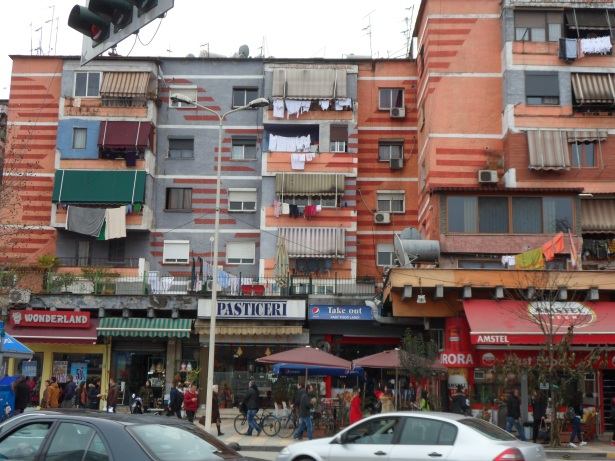
Tirana streets
A shower perched over a spa bath narrow enough only for the trim and athletic had no shower curtain, and thus flooded the bathroom each morning – counteracted by the small fan heater used for drying the floor.
A harsh crashing noise heard during a quiet cup of tea led, upon investigation, to the discovery that half the bathroom tiles had launched themselves from the wall into the (thankfully unoccupied) bath.
The kitchen had a fully functional range hood with a flue that terminated directly below the top of the kitchen cupboard. More than half of the lights did not work. Of those that did, the bathroom lighting situation is a particularly treasured memory.
In the bathroom itself there was a carefully wired motion sensor that killed the light after 90 seconds, right in the middle of your piddle or shower. In the alcove just outside the bathroom, directly in line with the double bed, was a bulb with no switch that was thus on permanently, as in 24 hours a day. For good measure the staff had fitted the brightest bulb possible, making sleep without the doona over your head a virtual impossibility.
This great little hotel has been ranked at 9.3 and 9.4 on a leading travel website, and reviewed as being above the usual standard of Albanian hotels. And despite all the flaws and potential threats to life, it was!
The tiny, poorly lit Archaeological Museum in Tirana had some lovely exhibits, many of which could only be viewed under flickering fluoros or by using your own torch. In some instances, ageing blutack failed to keep the exhibit upright
One of the primary purposes of my trip was to explore Albanian art and culture. Museums were a big attraction and it was with some excitement that I planned a day in the Albanian National Museum which, the website assured me, was open for business with a wide range of cultural exhibits. As it turned out, not only was the museum not open on this day, but it had not been open for more than a year due to reconstruction of the Skanderbeg Square.
Well then, off to the Archaeological Museum, located by the university on Mother Teresa Square. Thankfully I routinely carry a torch because some of the exhibits, thrown rather haphazardly into glass display cases (and not always upright), were in total darkness. In other corners, fluorescent bulbs strobed in a slightly worrying manner.
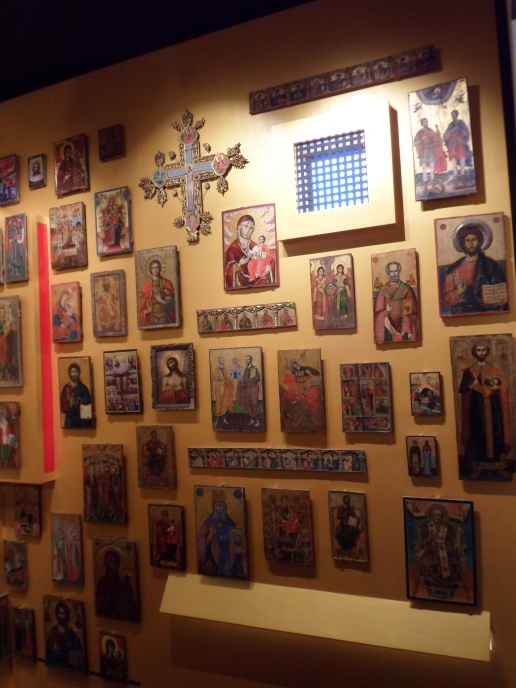
Wall of Byzantine icons at the National Museum of Medieval Art in Korce
The beautiful new National Museum of Medieval Art in Korce, which advertised an opening time of 10 am, was resolutely locked when I arrived at 11.30 after a 100km journey to view the unparalleled collection of Albanian orthodox icons. After four rings of the buzzer, and a retreat halfway down the entry path, the door opened a crack. ‘Yes, of course we are open. Come in.’
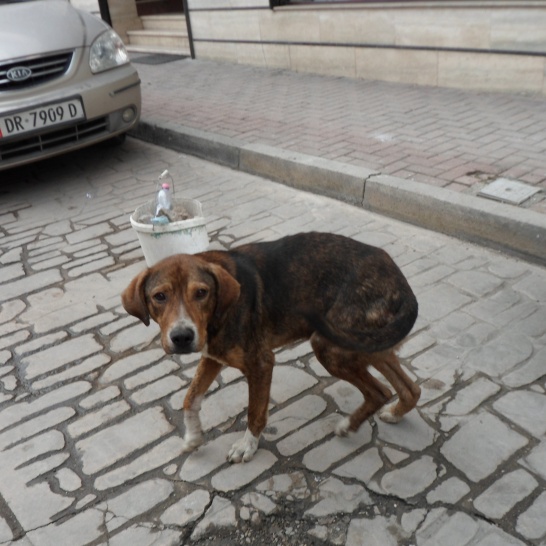
Sweet street dog in Durres
Perhaps the most lasting impression of Albania for this canine-loving traveller was the number of stray dogs on the streets – about 7,000 dogs roam free. Contrary to some rumours, they are generally gentle and sweet, looking for a bit of kindness and a square meal. They live absolutely everywhere and efforts to vaccinate and de-sex them , while valiant, have thus far reached only about 300 dogs.
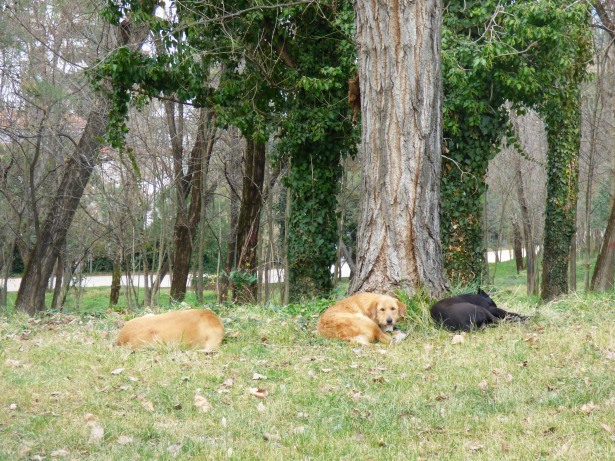
Stray dogs living in the park in Tirana
An entire pack of dogs live on a tiny roundabout in the middle of one of the busiest roads leading out of Tirana. They are remarkably street-savvy and road-smart. Most heart-wrenching for me was a mother with five young pups who tried to get them across the road. The pups were too scared to follow and they ended up separated by a never-ending stream of dodging and weaving traffic.
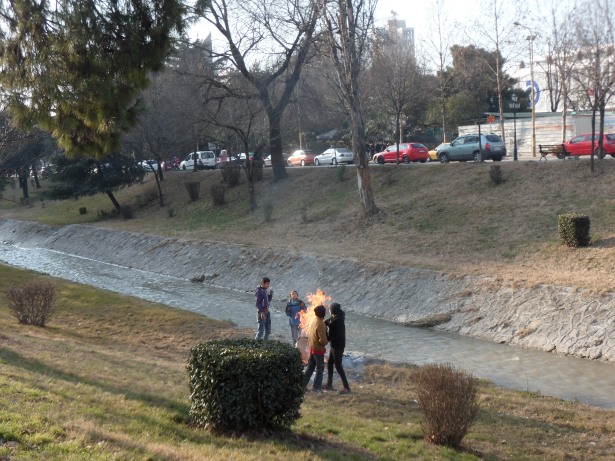
Children lighting a fire by the canal on one of the busiest streets in Tirana – no-one blinked
I must confess, I absolutely love this country, but two weeks was enough and I am just as happy to leave. Shonkiness, shoddiness and bodginess are an artform here, and absurdist principles (a la Waiting for Godot) abound.
Ankle-breaking holes in the footpath, deep wells that appear suddenly in the snow without barriers or warnings, maniacal drivers who charge into oncoming traffic to gain a one-car advantage, a deep underground water cistern at a tourist attraction with neither fences or signage …
Hazards for the unsuspecting tourist include footpaths that terminate in deep underground water cisterns, and unmarked wells and vertical shafts in the snow or grass
Albanians who survive into adulthood must be a wily and resilient lot because walking down the street is enough to cull the inattentive and non-athletic.
In stark contrast to this indifference to life, limb and culture is the Albanian passion for cars, and the proliferation of car washes and tire repair shops.
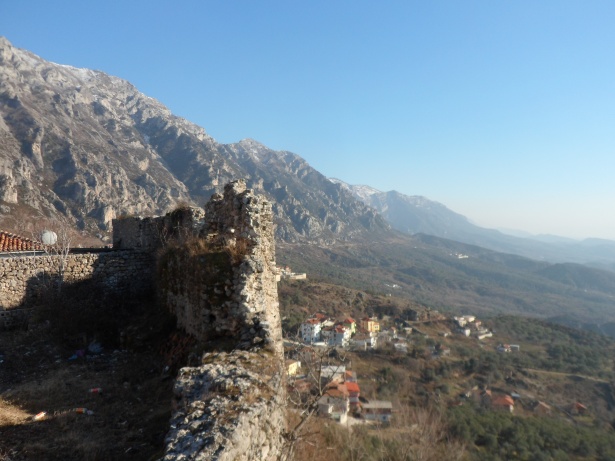
Castle walls in Durres
The Albanian land is phenomenally beautiful. Seventy percent of the country is covered by mountains that drop almost to the sea. It is bewildering that such a beautiful landscape is so marred and scarred by the presence of humanity.
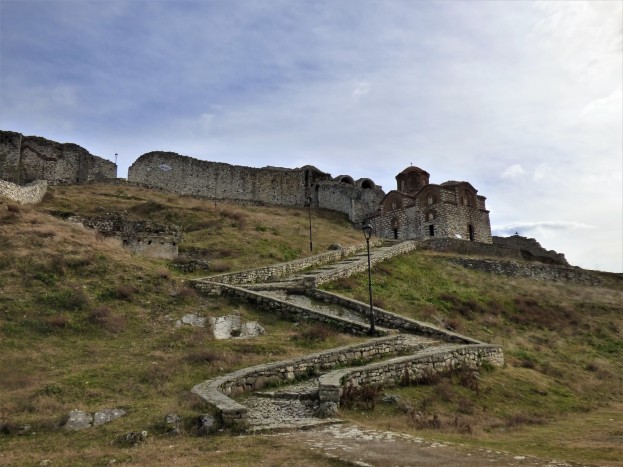
Castle at Berat. Many residents have ancestors who have lived here for countless generations
One can only hope that once the wider world begins to make its way to Albania’s shores, through both tourism, and art and cultural exchange, Albanians as a whole will begin to value the gift they have to share with the world.
Travelling tip: bring your own plug. They don’t come with the sink, can’t be bought, and google translate lists no Albanian word for plug.
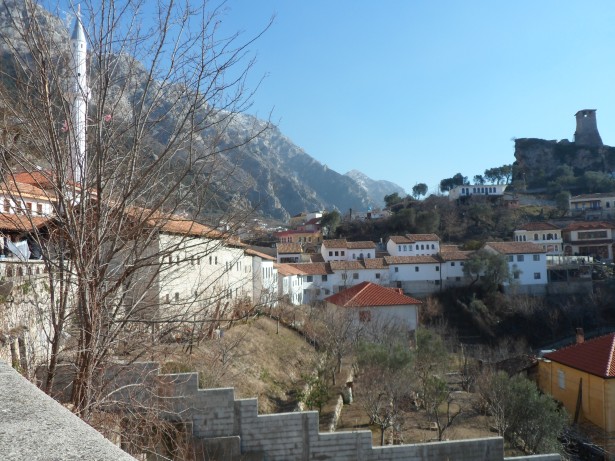
Durres













